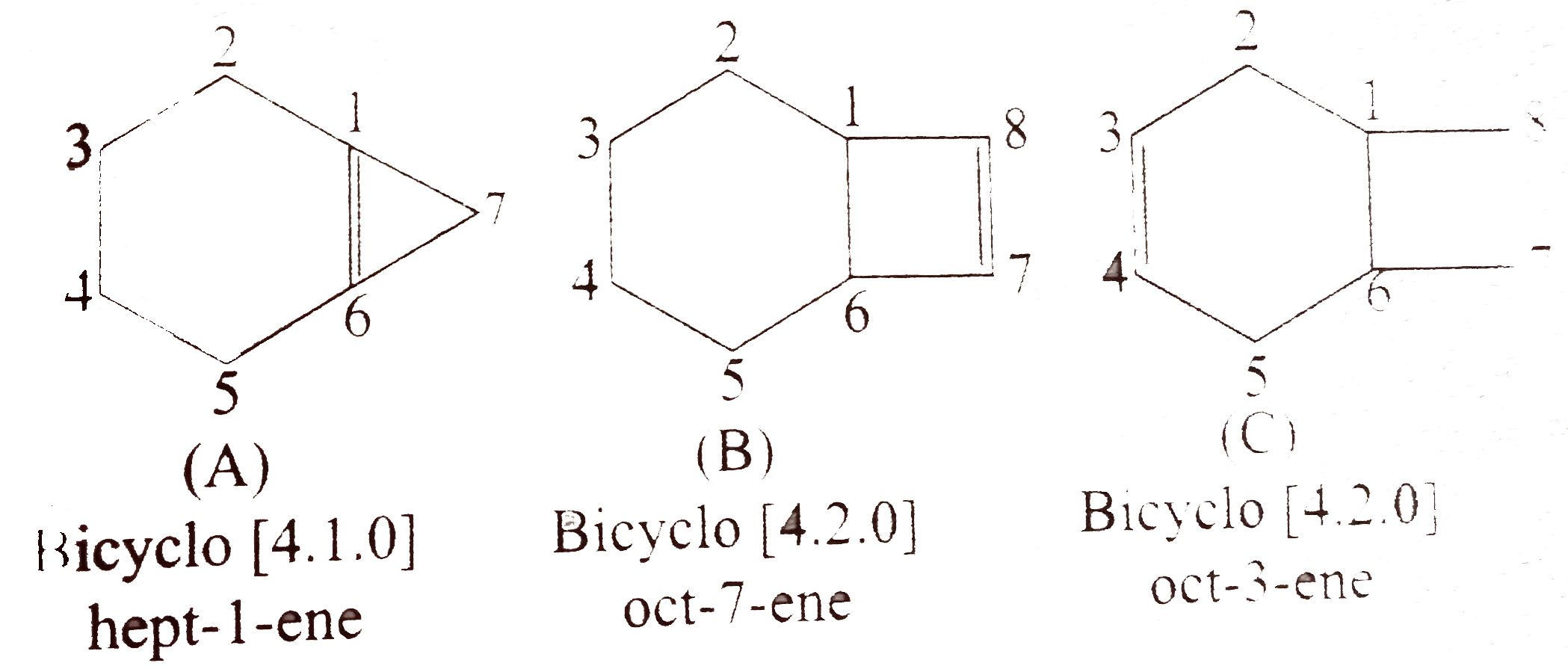Hydrocarbon (A) C6H10 on treatment with H2Ni,H2/Lindlar's catalyst or Na/liq. NH3 forms three different reduction products (B), (C), (D) respectively. (A) does not form any salt with ammonical AgNO3 solution, but (E) forms salt on heating with NaNH2 in an inert solvent. Compound (E) reacts with CH3l to give (F). Compound (D) on oxidative ozonolysis gives n-butanoic acid along with other product.
If (E) is reaxted with acelaldehyde followed by acidification, product is
acid
ketone
ether
alcohol
The correct Answer is:D
Topper's Solved these Questions
- ALKENE, ALKANE & ALKYNE BOOK - ALLENCHAPTER - ALKENE, ALKANE & ALKYNE EXERCISE - EXERCISE-4(A)
10 Videos
- ALKENE, ALKANE & ALKYNE BOOK - ALLENCHAPTER - ALKENE, ALKANE & ALKYNE EXERCISE - EXERCISE-4(B)
10 Videos
- ALKENE, ALKANE & ALKYNE BOOK - ALLENCHAPTER - ALKENE, ALKANE & ALKYNE EXERCISE - EXERCISE-1
119 Videos
- AIIMS 2019BOOK - ALLENCHAPTER - AIIMS 2019EXERCISE - CHEMISTRY
35 Videos
- ALKYL AND ARYL HALIDEBOOK - ALLENCHAPTER - ALKYL AND ARYL HALIDEEXERCISE - EXERCISE-05 (B)
37 Videos
Similar Questions
Hydrocarbon (A) C6H10 on treatment with H2,Ni,H2/Lindlar's catalyst or Na/liq. NH3 forms three different reduction products (B), (C), (D) respectively. (A) does not form any salt with ammonical AgNO3 solution, but (E) forms salt on heating with NaNH2 in an inert solvent. Compound (E) reacts with CH3I to give (F). Compound (D) on oxidative ozonolysis gives n-butanoic acid along with other product.
If (E) is reacted with acetaldehyde followed by acidification, product is
View SolutionHydrocarbon (A) C6H10 on treatment with H2Ni,H2/Lindlar's catalyst or Na/liq. NH3 forms three different reduction products (B), (C), (D) respectively. (A) does not form any salt with ammonical AgNO3 solution, but (E) forms salt on heating with NaNH2 in an inert solvent. Compound (E) reacts with CH3l to give (F). Compound (D) on oxidative ozonolysis gives n-butanoic acid along with other product.
(F) on ozonolysis will produce -
View Solution
Knowledge Check
Hydrocarbon (A) C6H10 on treatment with H2Ni,H2/Lindlar's catalyst or Na/liq. NH3 forms three different reduction products (B), (C), (D) respectively. (A) does not form any salt with ammonical AgNO3 solution, but (E) forms salt on heating with NaNH2 in an inert solvent. Compound (E) reacts with CH3l to give (F). Compound (D) on oxidative ozonolysis gives n-butanoic acid along with other product.
(F) on ozonolysis will produce -Aacetic aicdBformic acidCpropanoic acidDformaldehydeAH2/Lindlar's catalyst←−−−−−−−−−−−−CH3C≡CCH3Na/Liq NH3−−−−−−−−→B A and B, respectively, are
Acis, trans-but-2-eneBboth trans-but-2-eneCtrans, cis-but-2-eneDboth cis-but-2-eneThe three compounds (A),(B),and (C) on hydrogenation with H2+Pd give (D),(E) and (F), respectively.

Compounds (D),(E) and (F) are :A B
B C
C D
D
Hydrocarbon (A) C6H10, on treatment with H2/Ni,H2/ Lindlar's catalylst and Na/liquid NH3 forms three different reduction products (B), ( C) and (D) respectively. (A) does not form any salt with ammoniacal AgNO3 solution, but forms a salt (E) on heating with NaNH2 in an inert solvent. Compound (E) reacts with CH3I to give (F). Compound (D) on oxidative ozonolysis gives n-butanoic acid along with other product.
Give structures of (A) to (F) with proper reasoning.
View SolutionHydrocarbon (A) C6H10, on treatment with H2/Ni,H2/ Lindlar's catalylst and Na/liquid NH3 forms three different reduction products (B), ( C) and (D) respectiveluy. (A) does not form any salt with ammonial AgNO3 solution, but forms a salt (E) on heating with NaNH2 in an inert solvent. Compound (E) reacts with CH3I to give (F). Compound (D) on oxidative ozonolysis gives n-butanoic acid along with other product.
Give structures of (A) to (F) with proper reasoning.
View SolutionHydrocarbon (A), C6H10 on treatment with H2/Ni,H2/Lindler catalyst and Na /Liquid ammonia forms three different reduction products (B), (C) and (C) respectively. (A) does not form any salt with ammoniacal AgNO3 solution, but forms a salt(E) on heating with NaNH2 in an intert solvent. Compound (E) reacts with CH3I to give (F). Compound (D) on oxidative ozonolysis gives n-butanoic acid along with other product. Give structurs of (A) to (F) with proper reasoning .
View SolutionThe three compounds (A),(B),and (C) on hydrogenation with H2+Pd give (D),(E) and (F), respectively.

Compounds (D),(E) and (F) are :
View SolutionBenzene on reaction with HOCl in presence of an acid produces organic compound (A). (A) on treatment with NaNH2/liq. NH3 furnishes another organic compound (B). (B) on treatment with HBF4 affords an organic compound (C) which on heating with NaNO2 gives organic compound (D). Identify (A), (B), (C) and (D).
View Solution
